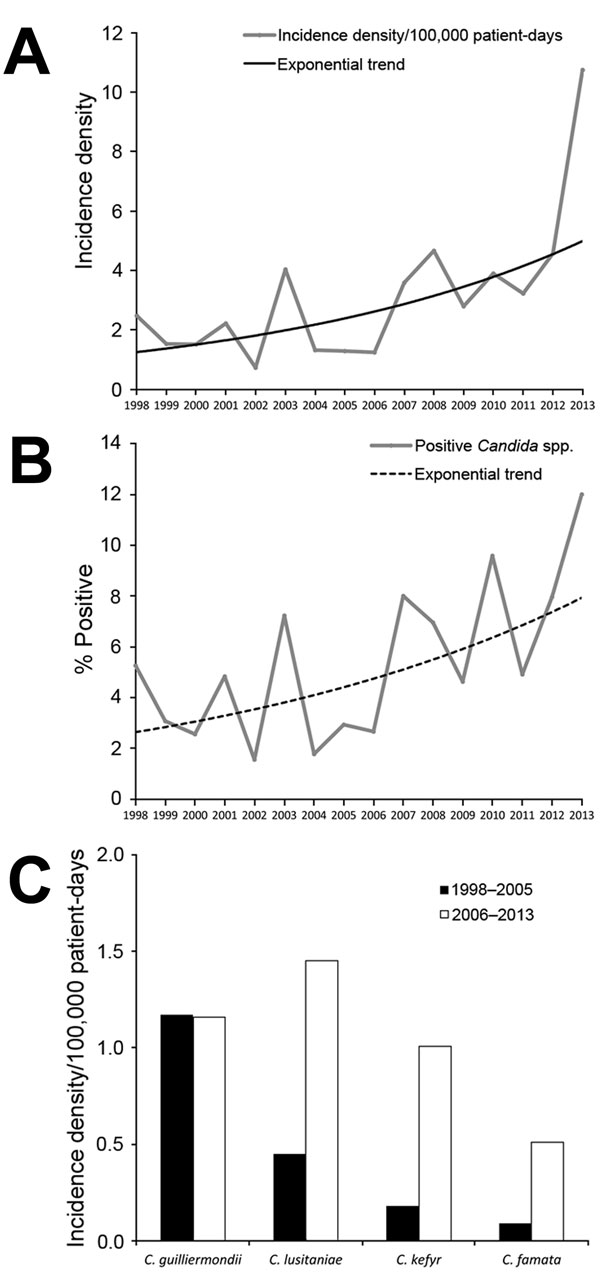Volume 21, Number 11—November 2015
CME ACTIVITY - Synopsis
Uncommon Candida Species Fungemia among Cancer Patients, Houston, Texas, USA
Figure 1

Figure 1. Increasing A) incidence density and B) proportion relative to all episodes of candidemia for bloodstream infections caused by uncommon Candida species at the University of Texas MD Anderson Cancer Center, Houston, Texas, USA, January 1998–September 2013. A) p<0.0001 and B) p = 0.001 for trend analyses. C) Incidence density of fungemia caused by uncommon Candida spp. during 1998–2005 compared with 2006–2013. There was a significant increase for C. lusitaniae (p<0.0001) and C. kefyr (p<0.0001) and a trend for increase for C. famata infections (p=0.068). C. guilliermondii infections remained stable.
1These authors contributed equally to this article.
2Current affiliation: Warren Alpert Medical School of Brown University, Providence, Rhode Island, USA.